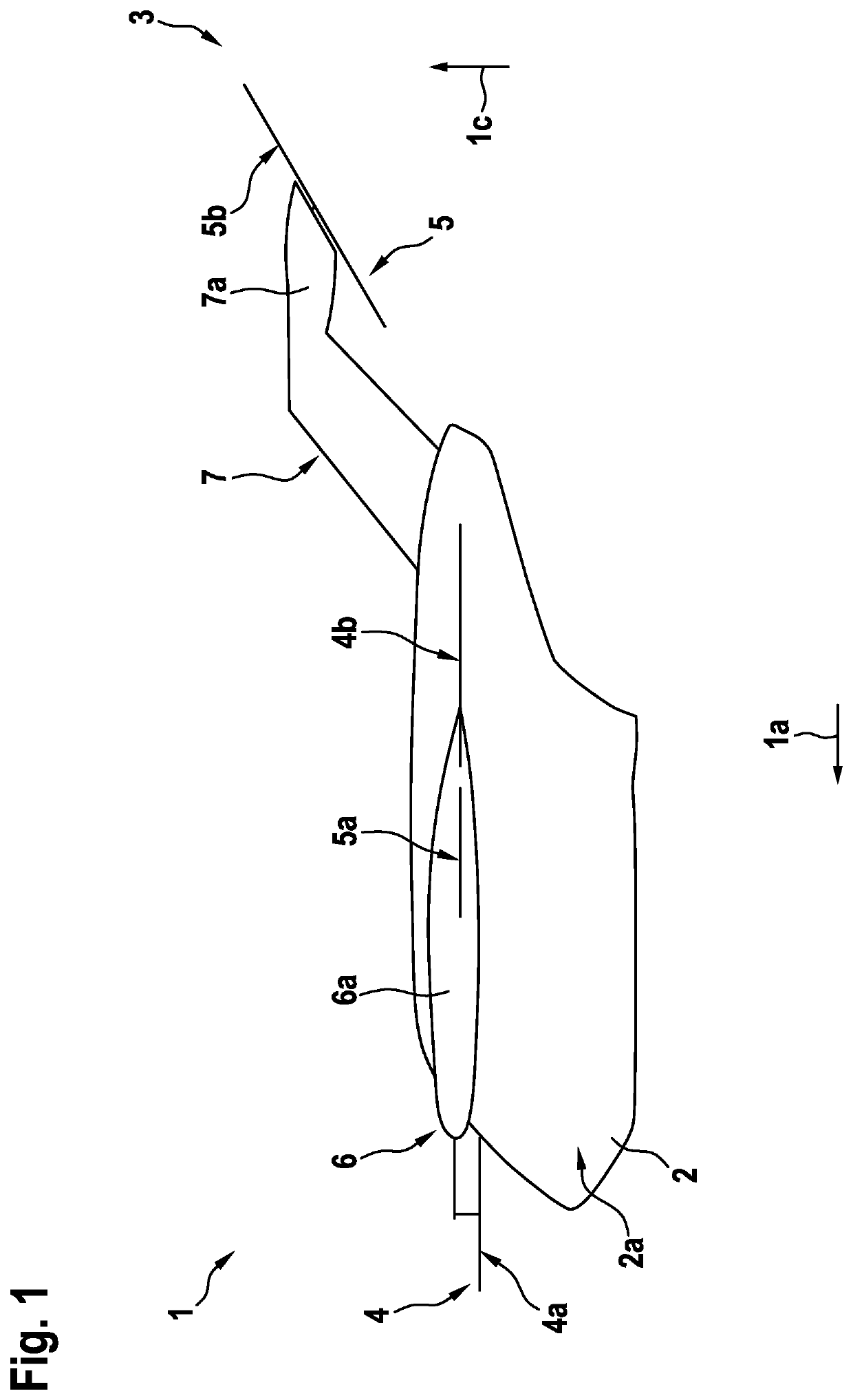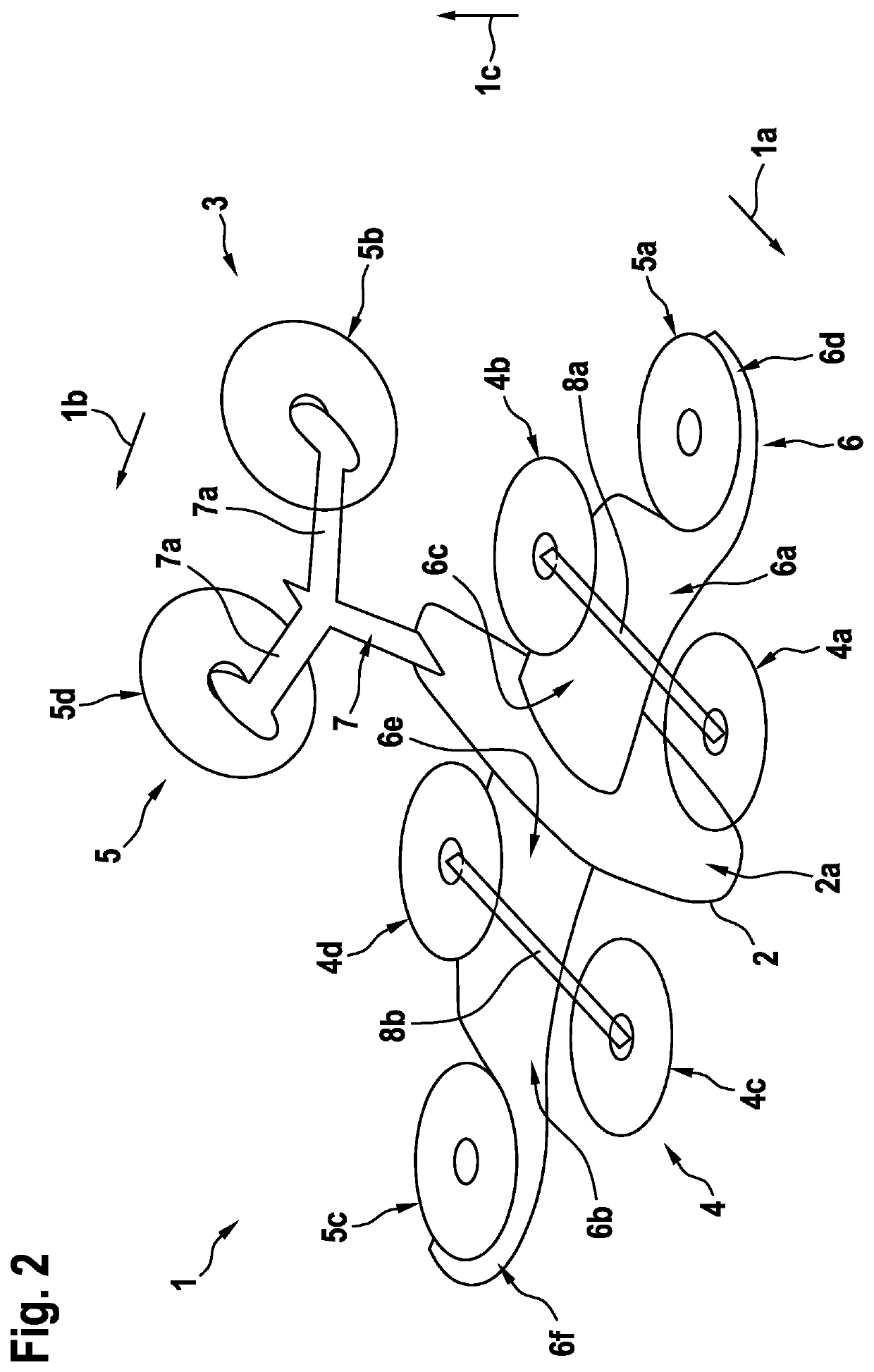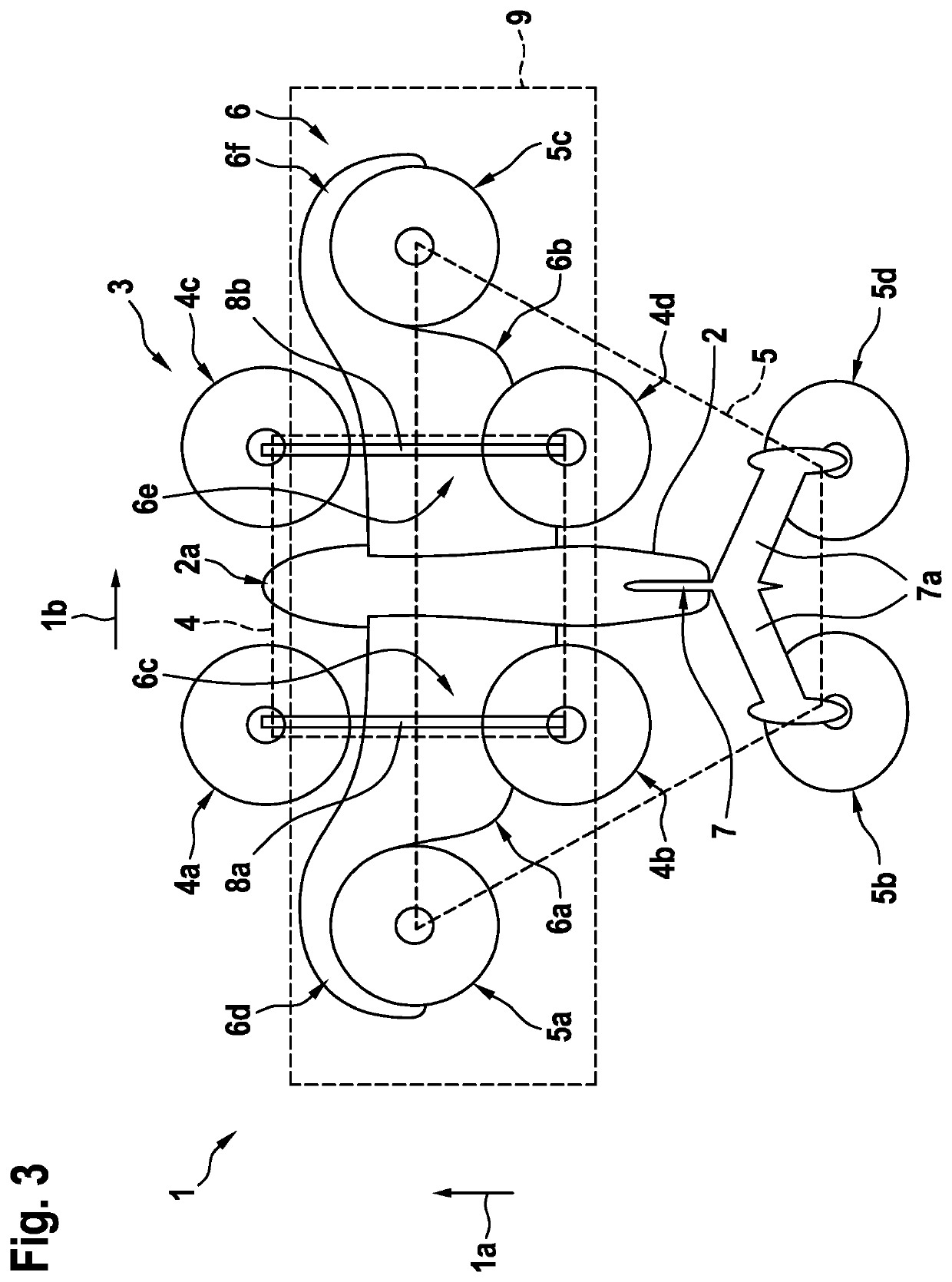Vertical take-off and landing multirotor aircraft with at least eight thrust producing units
- Summary
- Abstract
- Description
- Claims
- Application Information
AI Technical Summary
Benefits of technology
Problems solved by technology
Method used
Image
Examples
Embodiment Construction
[0081]FIG. 1 shows an exemplary VTOL multirotor aircraft 1 with an aircraft airframe 2. The aircraft airframe 2 defines a supporting structure that is also referred to hereinafter as the “fuselage” of the VTOL multirotor aircraft 1.
[0082]The fuselage 2 has an extension in longitudinal direction, which is illustratively represented by an arrow 1a that also exemplary indicates a forward flight direction of the VTOL multirotor aircraft 1, an extension in lateral direction (1b in FIG. 2, FIG. 3, FIG. 5, FIG. 6, FIG. 9 and FIG. 10), and an extension in vertical direction, which is illustratively represented by an arrow 1c that also exemplary indicates a vertical take-off direction. The fuselage 2 may be connected to any suitable undercarriage, such as e.g. a skid- or wheel-type landing gear.
[0083]Preferably, the fuselage 2 defines an internal volume 2a that is at least adapted for transportation of passengers, so that the VTOL multirotor aircraft 1 as a whole is adapted for transportatio...
PUM
 Login to View More
Login to View More Abstract
Description
Claims
Application Information
 Login to View More
Login to View More - R&D
- Intellectual Property
- Life Sciences
- Materials
- Tech Scout
- Unparalleled Data Quality
- Higher Quality Content
- 60% Fewer Hallucinations
Browse by: Latest US Patents, China's latest patents, Technical Efficacy Thesaurus, Application Domain, Technology Topic, Popular Technical Reports.
© 2025 PatSnap. All rights reserved.Legal|Privacy policy|Modern Slavery Act Transparency Statement|Sitemap|About US| Contact US: help@patsnap.com



